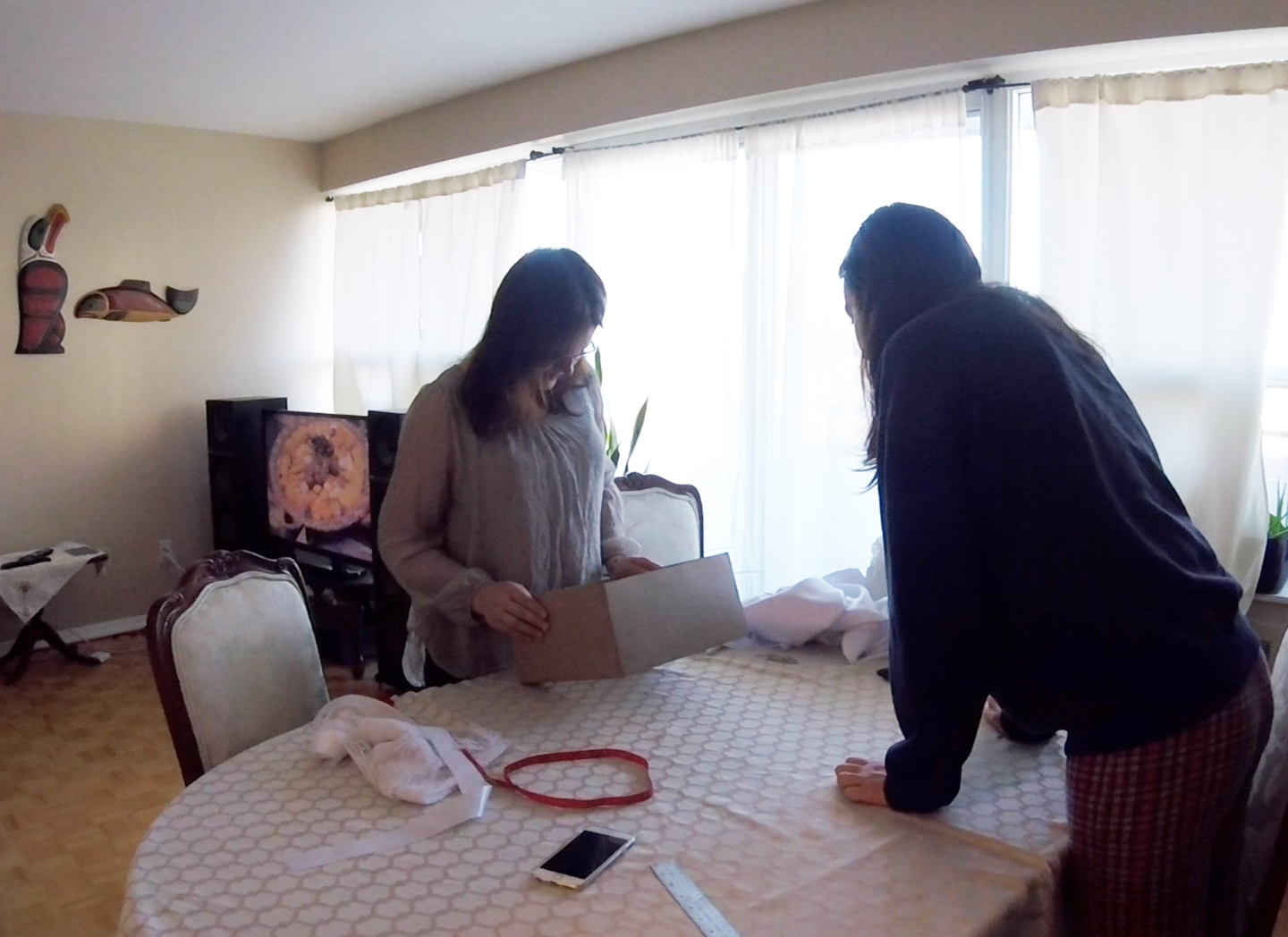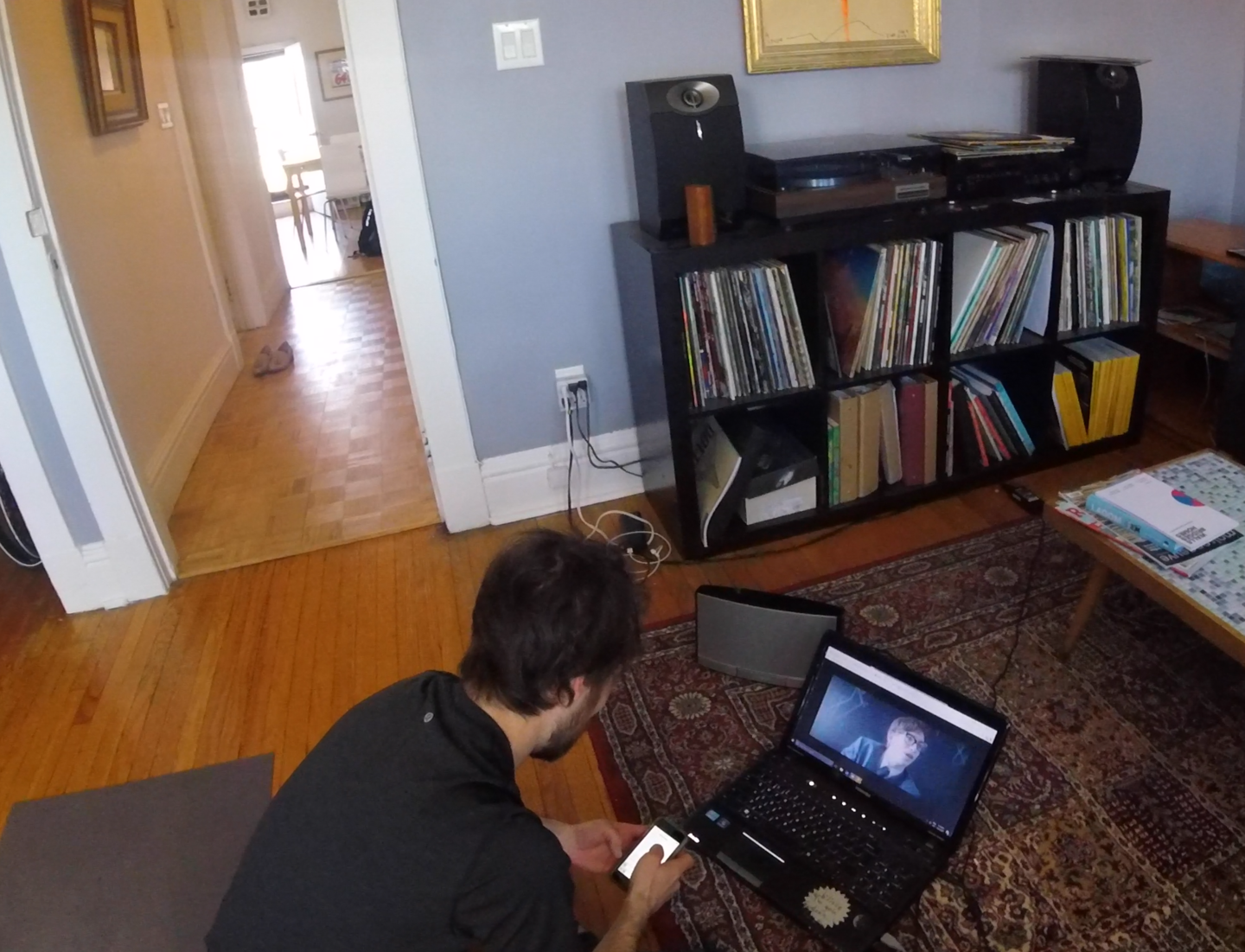In our Life Online research project, we investigated the real-life context in which users perform everyday digital tasks. Throughout multiple field studies and diary studies, we observed a recurring theme: digital “noise” is used to fill the “silent” moments in people’s lives both literally and figuratively:
- Digital media (e.g., TV channels or videos, music, podcasts) are played in the background while users perform other tasks.
- Devices such as smartphones and tablets are used to kill time and avoid boredom. (As early as in our study of WAP phones in 2000, we identified killing time as the killer app of mobile. Current phones are much more effective killers than were the primitive mobile devices of 2000.)
Digital Media as Background Noise
In many of our study sessions, participants turned on the digital media and then entirely ignored it while performing other activities. For example, one participant in our Toronto field study was working on a craft project with her daughter in her living room. Before beginning the project, she turned on the television. For the whole hour while she and her daughter worked on the craft project, neither of them looking at the TV even once.

Another field-study participant streamed a movie on Netflix with his wife. He and his wife would sit down and watch the movie for a few minutes, then one of them would walk away to perform some other task and return later — never pausing the movie. They clearly were not interested in the plot of the movie itself. The movie was a place for them to rest their attention in between other activities.
Some reported feeling an almost compulsive need to have some audio on, effectively filling the silence in their lives.
“I don’t like working in silence. I need to have the news on, or music. Background noise helps me.”
In our diary studies conducted in China and US, 131 responses reported multitasking or switching between tasks. Of those activities, 39% involved audio- or video-media consumption.
An Intensifying Phenomenon
Using the television or audio media as background noise predates the internet and is perhaps due to an innate human need to be social.
However, today it is easier to follow the inclination to fill the silence than ever before. Constantly available personal devices and an unprecedented array of on-demand content available for streaming offer users varied and sophisticated ways to fill their silence. As individuals spend less and less time in silence, they may become less and less comfortable with it.
Killing Time
While many participants reported feeling the need to have some sort of audio in the background during their silent moments, others reported a more intense version of this phenomenon: the need to fill all the empty moments in their lives with some activity to avoid boredom or downtime. This behavior fills the ‘silence’ in a figurative way — people use their devices to keep their minds constantly occupied.
In many cases, this desire to kill time contributed to frequent interactions with a device, even when the user had no specific task in mind. The content users turned to wasn’t just social media: it also included activities like checking email, the weather, or the news. The content itself didn’t matter — users felt compelled to be doing something.
One participant in our Toronto field study was observed compulsively reaching for his phone while he watched a movie.
“I always feel like I should be doing something with my hands.”

Another field-study participant exhibited a similar behavior while cooking. She would perform some cooking task (chopping an onion, filling a pot with water) and then, whenever she needed to wait for something (for example, for the water to boil), she would immediately pull out her iPhone.

This phenomenon is not limited to Western cultures: our Chinese participants also reported using devices to kill time. One woman told us she plays a WeChat mini game to fill her empty time while she commutes to work. Another participant told us that he uses the music and video app TikTok for “killing time.”
Just as the wide array of streamable content makes it easy to add background noise, the constant availability of mental distraction offers an accessible escape from boredom. Tech companies benefit from this behavior and intentionally facilitate it by using their understanding of psychological principles. Users are encouraged to step out of the physical world and back into the digital world using increasingly sophisticated techniques.
That being said, not all participants in our studies exhibited or reported this seemingly compulsive behavior. Some acknowledged that they tended to “fill the silence” in their lives, but they weren’t worried about it. Others were concerned and reported that they were trying to be more mindful in how they use their devices.
"I’m trying to stop filling the bored moment. I’m not just grabbing at the phone without thinking.”
“I feel that I want to put my phone away, somewhere where I’m not checking it as often. I feel like I don’t have parameters around when I’m using it. […] I feel like it’s actually fried my brain a little bit. Because instead of being in the silence of the moment, it’s filled with noise, or distraction.”
“With social media, I’ve deleted it from my phone before and that did help. I put it back though, because I find you just fill it with something else. Like, if I go to look for it or tap it and it’s not there, then I’ll say, OK, well, maybe I’ll play a game, or maybe I’ll use a different social media app, or look at YouTube videos or something."
Conclusion
This compulsion to fill the silence is related to the Vortex phenomenon, which refers to people’s lack of control over the amount of time they spend online, due to continuous digital temptations that pull them deeper and deeper into interacting with their devices. As people feel the need to fill every single empty moment, they are more and more drawn to their devices, as an easy way to satisfy that need.
We don’t believe that time spent in the digital world is inherently bad. As we noted, some users don’t feel concern or frustration with their device usage. But we also did hear expressions of concern and frustration from many people, and that is certainly a problematic consequence of design. An understanding of these feelings is critical for designers, particularly as the field of design begins to explore ways to help users manage their digital time.





Share this article: